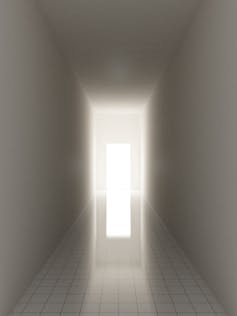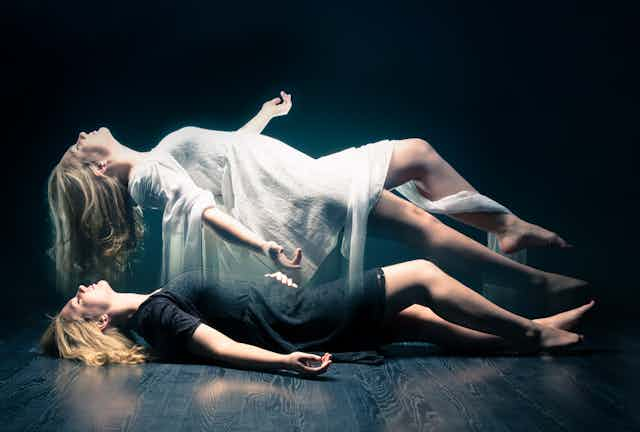Have you ever felt as though your sense of awareness was outside of your physical body? That you were looking back at yourself from another place in the same room? If so, you’ve probably had an out-of-body experience (OBE). But not all OBEs are the same.
Research suggests OBEs are more common than one might think, with around 10% of the population having reported at least one such experience in their lifetime.
Some people experience their usual physical surroundings from a different spatial perspective; others report travelling out of their body to imaginary dream realms.
A sense of leaving one’s body
My colleagues and I last year conducted a study examining the potential differences in accounts of out-of-body experiences.
We explored 194 responses from individuals who had claimed to have had an OBE. In particular, we conducted statistical analyses to determine potential differences in the type, or “quality” of experiences reported.

We asked a number of questions, summarised as follows, about the specific features of OBEs reported by participants:
- Can you bring about an out-of-body experience at will or by intention?
- During your prior out-of-body experiences did you have a distinct sensation of leaving your body?
- Did you have a sensation of coming back to your body at the end of the experience?
- How would you describe your surroundings during your previous out-of-body experience(s) (realistic or imaginary)?
The results indicated that people who reported spontaneous OBEs did not commonly have a distinct sense of floating out of their body. In fact, such individuals typically found themselves spontaneously “out-of-body” and looking back at themselves from a different place in the same room.
But those people who had claimed to predominantly induce their own out-of-body experiences also reported sensing a distinct physical sensation of separation from their body.
Induced or spontaneous?
Induced experiences can be defined as those in which a person wilfully brings about an OBE. These can be produced via meditation, self-hypnosis, visualisation and other techniques involving body perception.
Induced OBEs can also be triggered in a laboratory, including with the aid of perceptual illusions or clinical hypnosis.
For our research, we were more interested in autonomously-induced experiences – that is, OBEs participants reported bringing on themselves.

I believe research along these lines is important as it differentiates between types (or qualities) of OBEs. If you have ever had such an experience, you might recall particular features of your own body perception and aspects of the environment during the experience.
Given experiences appear to differ broadly, based on individual accounts, we can ask: which factors might predict the type of OBE someone is more prone to have?
Interestingly, there have been a plethora of studies into factors that may cause OBEs, but few that have considered differences between types of OBEs.
We believe we have successfully demonstrated there are differences between spontaneous and induced OBEs – namely, the distinct sense of “body separation” experienced by people who have induced their OBEs, and the absence of such a sensation for people who experience spontaneous OBEs.
There may be more differences between these types of OBEs, and that’s what we must look at next.
Have you ever had a spontaneous or an induced out-of-body experience? Or both? Share your reflections about your experience(s) below.

